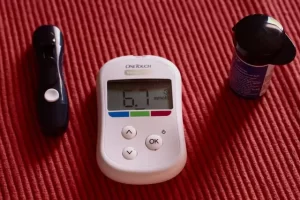Officially known as diabetes mellitus, diabetes is a disease that affects millions of Americans. Diabetes isn’t a disease that discriminates based on age. That means adults, as well as children, need to be aware of the disease and remain vigilant about taking steps to avoid developing the condition. People who’ve already been diagnosed with diabetes need to know what they can do to live and thrive with the malady.
What Is Diabetes?
Diabetes is a metabolic condition which either causes your body to produce too little insulin or prevents cells from using the insulin your body does produce effectively. In either case, the result is high blood sugar levels.
There are three primary kinds of diabetes, type 1 diabetes, type 2 diabetes, and gestational diabetes. A person is diagnosed with type 1 diabetes when the cells that produce insulin are destroyed by their immune system, which leads to insufficient insulin production.
Type 2 diabetes is the diagnosis when your body’s cells can’t use the insulin your body produces effectively. Gestational diabetes develops during pregnancy, and it’s caused by pregnancy hormones or the inability of a person’s body to produce a sufficient amount of insulin.
In addition to the types of diabetes just mentioned, there’s another condition you should be aware of – and it’s prediabetes. Prediabetes is a condition that’s becoming increasingly common, although many people are unaware they have the condition. Your doctor may tell you that you have prediabetes if your blood sugar is higher than it should be, but not high enough to diagnose you with type 2 diabetes.
Who Is at Risk?
Just about everyone risks being diagnosed with diabetes. While that’s the case, type 1 diabetes normally occurs in kids and young adults, although grown-ups can develop the condition, too. Type 2 diabetes is usually seen in people who are overweight or obese and 30 years-old or older. Unfortunately, more cases of type 2 diabetes are being diagnosed in younger age brackets because an increasing number of children and young adults are overweight or obese.
Pregnant women are vulnerable to gestational diabetes. This type of diabetes normally goes away after a woman gives birth, but there have been cases when that hasn’t been the case. People whose birth mothers had this sort of diabetes during pregnancy have an increased chance of developing diabetes during their lifetime.
Managing Diabetes
Although getting a diabetes diagnosis can seem overwhelming at first, it is possible for a lot of people to manage their condition by making a few lifestyle changes and, sometimes, taking medicine. In general, it’s advisable for people with diabetes to adopt a low-carb diet and incorporate exercise into their daily routines.
People with type 1 diabetes typically have to take insulin to supplement the insulin their bodies produce. If diet and exercise aren’t enough to manage their disease, people with type 2 diabetes may have to take prescription medicine, such as DPP-4 inhibitors or glucagon-like peptides. Only 10 – 20 percent of women diagnosed with gestational diabetes wind up needing to take insulin.
To manage your diabetes or to reduce the chances that you’ll develop the condition, regular checkups and monitoring of your blood sugar levels are absolute musts. Make an appointment to visit our Charlotte, NC-area family medicine practice now.
Matthews Internal Medicine – here for all your medical needs.


